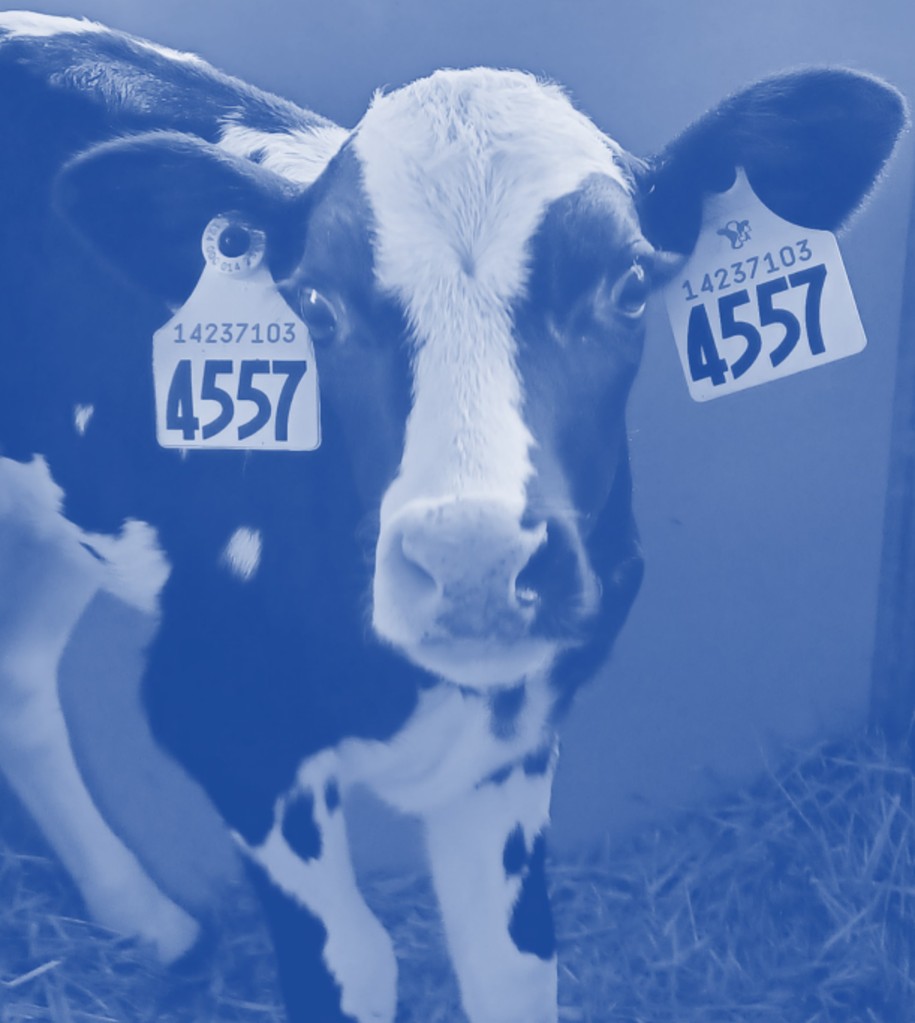
A calf’s microbiome is established very early in life.
The microscopic world cannot be seen, but it can impact dairy production, health, and the environment. We tend to think of microbes in the context of causing disease, but they are a key driver of life and provide many benefits to animals, especially to the ruminant. The cow acts as a host to the microbes by providing a habitat in which to live, and the microbes, in turn, provide the cow with functions that the cow cannot complete on its own. A review article from the University of Alberta provides insight into how the microbiome might be harnessed to drive sustainable dairy production in terms of health, production efficiency, and reducing greenhouse gas emissions.
First, we must consider what microbes make up this complex community and how it is established.
The word microbiome is broken down into two parts: ‘micro’ means extremely small, and ‘biome ‘ means the genetics of a community that lives in a habitat. The microbiome is a community of bacteria, archaea (single-celled organisms similar to bacteria), protozoa, viruses, and fungi that make up the microscopic world. The microbiome is always changing. Changes in microbe diversity, proportions to each other, and individual microbe gene expression change based on the cow’s diet, stress, age, gender, genetics, and location in the digestive tract. Like the cow, microbiomes have their own genome, which responds to the environment.
Early life management of calves and their diet can influence the microbiome. A recent study investigated the timing of colostrum feeding on the microbiome composition of a section of the small intestine that is critical to calf digestive health and immune cell training.
Some of the mother’s microbes transfer to the newborn during birth, with microbiomes colonizing the calf’s lungs and gastrointestinal tract. Recent work by Song, et al., 2021 aimed to answer the question; what role does colostrum play in establishing the early life microbiome?
Colostrum was fed to 22 newborn male calves randomly assigned to the feedings that were either close to birth at 45 minutes, delayed feeding until 6 hours or delayed until 12 hours after birth. Pasteurized colostrum was fed to all calves at birth, containing 62g of Immunoglobin G per liter.
The researchers found that bacteria, archaea, eukaryotes, and viruses colonized the calf’s small intestine within the first 2 days of life. The timing of colostrum feeding did not overly affect the abundance of microbes but did impact the presence of specific species and metabolic pathways. There were many microbes present in the 2-day-old calf. One of those species, Enterococcus, a bacteria, had increased abundance in calves fed colostrum at 12 hours after birth compared to those at 6 hours or 45 minutes after birth. More research is needed to confirm what impacts this has on the calf, but the presence of this bacterial species could reduce IgG absorption and cause immune system stimulation. Other species of note are methanogens and Lactococcus, lactate-producing bacteria, also present in the newborn’s gut at 2 days old. These bacteria are important for non-ruminant digestion and immune system training.
This study was done experimentally to investigate the impact of delayed colostrum feeding and provide evidence to feed colostrum as soon as possible. Feeding good quality colostrum in sufficient quantity as soon as possible after birth is recommended to ensure a good transfer of immunity from the mother to the calf.
This is just a preliminary glimpse into the wonderful world of microbes of dairy cattle. Environment, cow genetics, and other outside factors can play a role in the microbiome within each animal. A key takeaway from this research is that management in early life has some influence over microbe abundance, diversity, and gene expression. It is a bit early to know how calf management might change with this information, but knowing that early life decisions for feeding can affect lifetime productivity is important. Look for more information on this topic in the coming years.
Sources:
- O’Hara et al., 2020. Annu. Rev. Anim. Biosci. 8:199-220.
- Song et al., 2021 J. Dairy Sci. 104:8783-8797.
